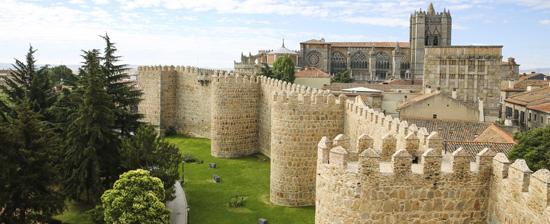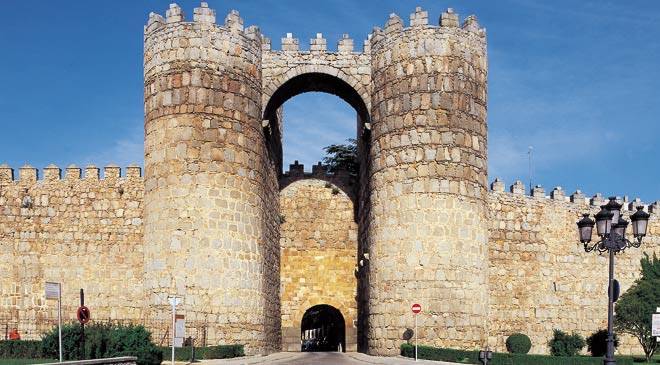 The town of Avila, Spain (located just west of Madrid), has the best preserved medieval walls in the country and is the second biggest wall in the world after the Great Wall of China. These ancient walls were built as a defensive mechanism but also served to control the entrances (of both people and goods) to the city and guard against outbreaks of the plague. The walls are shaped in a sort of rectangle and feature 88 towers and 9 gates. The most spectacular gate is Puerta del Alcazar, the Gate of the Fortress. It’s not surprising why Avila, and its walls, is a UNESCO World Heritage site.
The town of Avila, Spain (located just west of Madrid), has the best preserved medieval walls in the country and is the second biggest wall in the world after the Great Wall of China. These ancient walls were built as a defensive mechanism but also served to control the entrances (of both people and goods) to the city and guard against outbreaks of the plague. The walls are shaped in a sort of rectangle and feature 88 towers and 9 gates. The most spectacular gate is Puerta del Alcazar, the Gate of the Fortress. It’s not surprising why Avila, and its walls, is a UNESCO World Heritage site.
 The walls took almost 600 years to build, starting in 1090, and are 12 meters high. Today, visitors can walk along the tops of some of the walls, just as people did hundreds of years ago (although you pay an entrance fee of a few euros now—I’m not sure if people paid back then). And, the walls are beautifully illuminated at night.
The walls took almost 600 years to build, starting in 1090, and are 12 meters high. Today, visitors can walk along the tops of some of the walls, just as people did hundreds of years ago (although you pay an entrance fee of a few euros now—I’m not sure if people paid back then). And, the walls are beautifully illuminated at night.
- Read about the history, structure, and architects of the wall. Note the last paragraph, which focuses on how the citizens of the town were included in the obligations of tending and guarding the walls. Can you think of other places in the world where people feel so connected to an aspect of their town? Or do you think this is a rare instance of a structure building, as it were, a community?
- Watch this video of the walls of Avila, and then take a walk yourself, along the wall, here. Click, if you like, on the 360-degree section of that site for closer looks. Note some of the details in the carvings and stone. What are some of the ways that the town has incorporated the walls into buildings—and daily life?
- Read one traveller’s experiences in Avila, including walking along the walls. How do you think walls impact a city, long-term? What do they keep in—and keep out?
Contact Explorica to start planning your next educational travel experience in Spain! 1.888.378.8845
